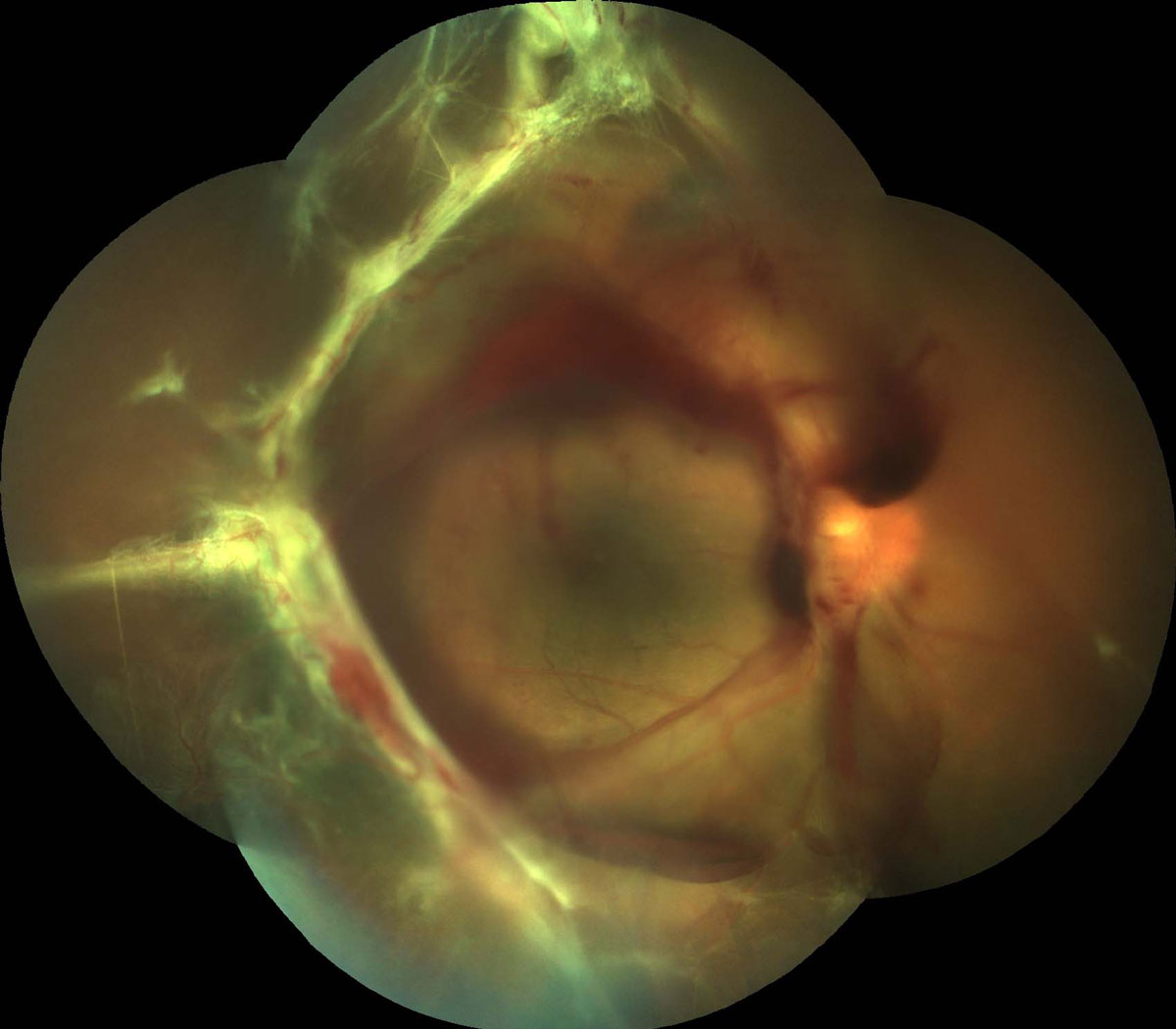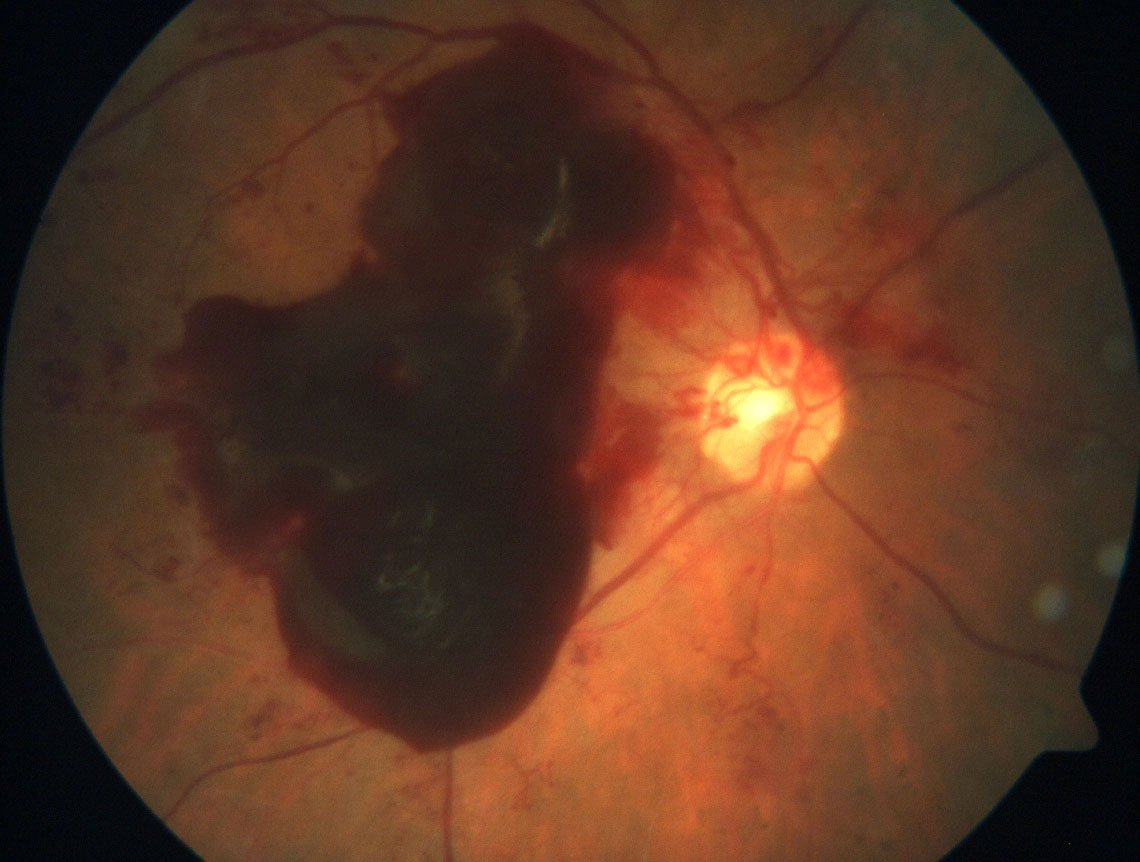15.1 Indications for Vitrectomy in Diabetic Retinopathy
Vitrectomy in diabetic retinopathy is most commonly indicated for non-clearing vitreous hemorrhage, tractional retinal detachment threatening the macula, and combined tractional-rhegmatogenous retinal detachment.
Indications for Vitrectomy in Diabetic Retinopathy
- Vitreous hemorrhage that is persistent or recurrent (the most common indication). Consider the following criteria to determine the need for, and urgency of surgery:
- Presence / lack of prior treatment (laser)
- VH in an only eye (Figure 15.1.1)
- Presence of anterior segment neovascularization (decreases chances of spontaneous clearance)
- Vitrectomy will decrease the durability of anti-VEGF agents; therefore, some surgeons are reluctant to perform a vitrectomy unless VH does not clear after several months. Anti-VEGF therapy can be used before considering surgery to support spontaneous clearance. However, if there is significant neovascularization this risks accelerating fibrosis and tractional retinal detachment
- DRCR.net Protocol AB compared aflibercept versus prompt vitrecomy with PRP in eyes with vitreous hemorrhage from PDR. Although initial visual recovery was faster with vitrectomy, the study found no significant difference in visual acuity outcomes long-term, confirming that both vitrectomy and early anti-VEGF are viable treatment options[1]
- Tractional retinal detachment (TRD) threatening the macula (Figure 15.1.2). Some patients may have stable extrafoveal diabetic TRDs- documented progression is preferred before operating
- Combined tractional-rhegmatogenous retinal detachment
Antoszyk AN, Glassman AR, Beaulieu WT, Jampol LM, Jhaveri CD, Punjabi OS, Salehi-Had H, Wells JA 3rd, Maguire MG, Stockdale CR, Martin DF, Sun JK; DRCR Retina Network. Effect of intravitreous aflibercept vs vitrectomy with panretinal photocoagulation on visual acuity in patients with vitreous hemorrhage from proliferative diabetic retinopathy: a randomized clinical trial. JAMA. 2020 Dec 15;324(23):2383-2395
All rights reserved. No part of this publication which includes all images and diagrams may be reproduced, distributed, or transmitted in any form or by any means, including photocopying, recording, or other electronic or mechanical methods, without the prior written permission of the authors, except in the case of brief quotations embodied in critical reviews and certain other noncommercial uses permitted by copyright law.
Westmead Eye Manual
This invaluable open-source textbook for eye care professionals summarises the steps ophthalmologists need to perform when examining a patient.




